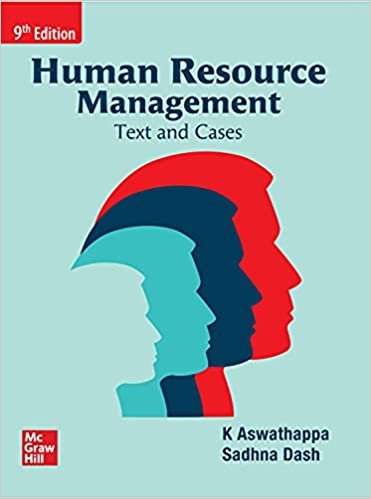Human resource planning can be defined as the process of identifying the number of people required by an organization in terms of quantity and quality. All human resource management activities start with human resource planning. So we can say that human resource planning is the principle/primary activity of human resource management.
Although HRP is a very advantageous method it has some limitations which can be explained as follows:
- The future in any company is uncertain: – i.e. there are political, cultural, technological changes taking place every day. This effects the employment situation. Accordingly the company may have to appoint or remove people. Therefore HRP can only be a guiding factor. We cannot rely too much on it and do every action according to it.
- Conservative attitude of top management :- Much top management adopts a conservative attitude and is not ready to make changes. The process of HRP involves either appointing. Therefore it becomes very difficult to implement HRP in organization because top management does not support the decisions of other department.
- Problem of surplus staff :- HRP gives a clear out solution for excess staff i.e. Termination, layoff, VRS,. However when certain employees are removed from company it mostly affects the psyche of the existing employee, and they start feeling insecure, stressed out and do not believe in the company. This is a limitation of HRP i.e. it does not provide alternative solution like re-training so that employee need not be removed from the company.
- Time consuming activity :- HRP collects information from all departments, regarding demand and supply of personnel. This information is collected in detail and each and every job is considered. Therefore the activity takes up a lot of time.
- Expensive process :- The solution provided by process of HRP incurs expense. E.g. VRS, overtime, etc. company has to spend a lot of money in carrying out the activity. Hence we can say the process is expensive.
What is Human Resource Planning
Human resource planning (HRP) is compulsory for forecasting the need for the right talents in an organisation at the right time. It involves assessing current and future human resource needs and developing strategies to ensure that the company has an adequate amount of employees with the necessary skills and knowledge to meet its business objectives.
Human resource planning is critical to any business strategy, as it ensures the company has the workforce it needs to achieve its goals. Without proper planning, a company may find itself without the skilled workers it needs to stay competitive or face a shortage of workers altogether.
Objectives of Human Resource Planning
Human Resource Planning can help a company avoid many potential problems, such as:
- A shortfall of skilled workers needed to meet the demand
- An oversupply of workers leads to increased costs
- Incompetence to attract and retain top talent
- Inefficient use of human resources leading to higher costs
- By taking the time to properly plan for its human resources needs, a company can avoid these pitfalls and position itself for long-term success.
Human Resource Planning is Compulsory For, Importance of Human Resource Planning
- Human resource planning ensures that the right people are in the right jobs at the right time. This maximises employee productivity and effectiveness while reducing stress and turnover.
- Human resource planning provides a road map for organisational growth. By aligning HR strategies with business goals, organisations can make well-informed decisions about where to invest resources for maximum impact.
- Human resource planning improves communication and coordination between different departments within an organisation. By aligning HR goals with those of other departments, silos are broken down, and everyone can work together more effectively towards common objectives.
- Human resource planning promotes a culture of continuous learning and development. By investing in employee training and development, organisations can keep their workforce agile and adaptable to change.
- Human resource planning helps organisations to attract and retain top talent. By understanding the skills and experience required for critical positions, organisations can develop targeted recruitment and retention strategies.
- Human resource planning facilitates succession planning and continuity management. By identifying future leaders and high-potential employees, organisations can ensure a smooth transition of power in times of change or crisis.
- Human resource planning enhances financial performance. By aligning HR strategies with financial goals, organisations can make budgeting decisions that improve bottom-line results.
- Human resource planning creates a competitive advantage. By leveraging HR data and analytics, organisations can gain insights into their workforce that allow them to make strategic decisions that give them a leg up.
Process Human Resource Planning
While forecasting workforce demand is at the heart of human resource planning, HR professionals require a comprehensive and in-depth view of their organization and an understanding of multiple factors to put together a plan. Smartsheet.com identifies seven key steps in the planning process, which may be applied in terms of their relevance to the circumstances of a specific enterprise:
- Step One: Analyze the objectives of your organization
- Step Two: Make an inventory of current human resources
- Step Three: Forecast your HR demand
- Step Four: Determine the number and extent of skills gaps
- Step Five: Draw up an action plan
- Step Six: Integrate and implement the plan
- Step Seven: Monitoring, measurement, and feedback
The Human Resource Planning is done Based on the
- Human resource planning ensures that a company has the correct set of employees holding the necessary skills to meet its business goals.
- Human resource planning helps a company avoid both understaffing and overstaffing, which can lead to inefficiencies and lost productivity.
- Human resource planning can help a company save money by ensuring that it only hires the staff it needs and doesn’t have too many employees on its payroll.
- Human resource planning ensures that a company has a talent pipeline ready to step into new roles as needed, helping to avoid disruptions in employee turnover.
- Human resource planning can help a company stay compliant with government regulations related to employment and labour law.
To Read more such informative Blogs Click Here
hradvosrs4u Blogs
What are Components of Human Resource Planning
Followings are the components of human resource planning:
- Estimating Manpower Requirement
- Workload analysis
- Workforce analysis
- Absenteeism
- Labor turnover
- Recruitment & Selection
- Induction & development
- Personnel Development
- Ensuring quality to products & services
- Overall assessment & performance & fine- tuning
Human Resource Planning Ppt

Salient Features : 1) New chapter on digitalisation of HRM 2) New appendix on Research Topics in HRM 3) New topics such as job grafting, managing employee experience, amended labour 4) laws, 4th industrial revolution and its impact etc. 5) Rewritten sections on topics such as assessment centres, jobs and career, technology etc. 6) Newly introduced features such as Scenario Analysis, Technology in HR and Hands-On Experience to help students bridge the gap between theoretical concepts, its practical application at the workplace, as well as the emerging technology



Add a Comment